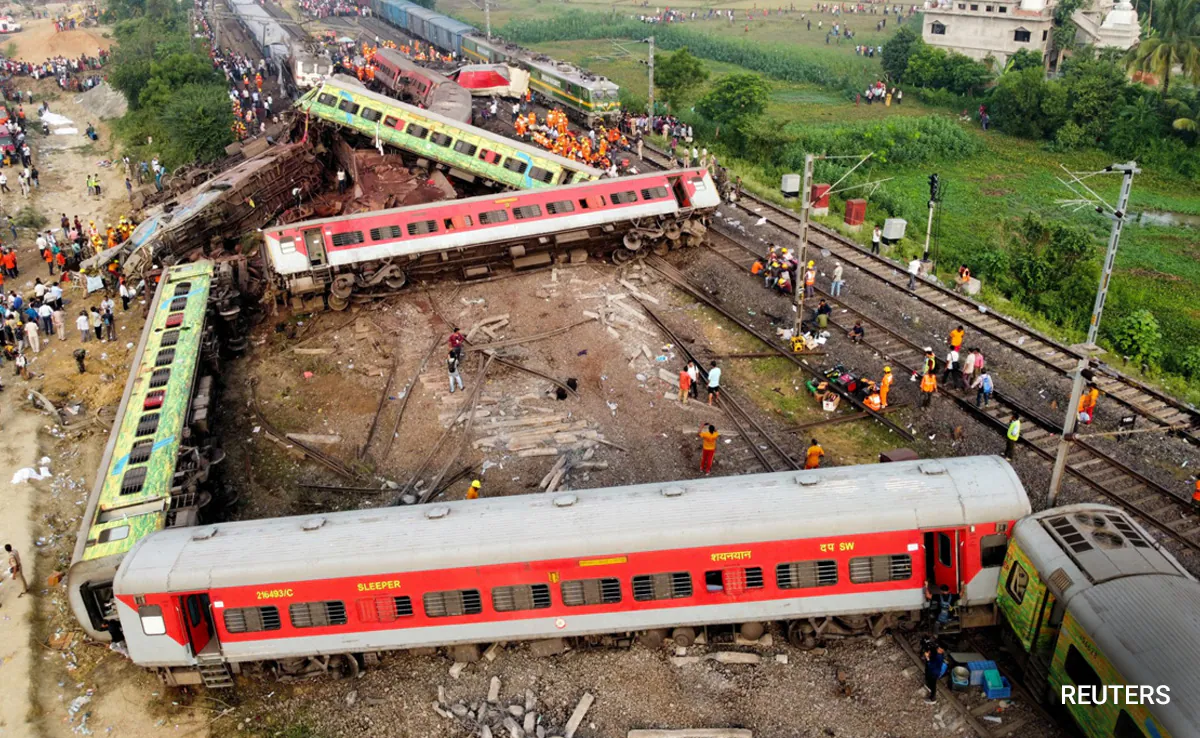In recent news, the Odisha train accident has shocked the nation, leaving us all deeply saddened by the loss of lives and the devastation caused. As we strive to make sense of this tragic incident, a preliminary probe conducted by senior railway officials has shed some light on the potential cause: a ‘mistaken’ signal. In this article, we delve into the details of the mishap, explore the implications of the signal error, and highlight the importance of ensuring the safety and reliability of railway systems.
Unveiling the Sequence of Events
According to the report, the Coromandel Express encountered a ‘mistaken’ signal en route to its destination that diverted it onto a line where a goods train was parked. This unfortunate diversion resulted in a catastrophic collision, claiming the lives of approximately 290 people. The senior railway officials’ preliminary findings have provided valuable insights into the accident, enabling us to better understand the sequence of events that unfolded that fateful day.
Analyzing the Signal Error
The probe revealed that the signal, initially given for the main line, was subsequently withdrawn. However, due to what seems to be a lapse in communication or coordination, the Coromandel Express mistakenly entered the loop line and collided with the stationary goods train. The report further mentions that the pipe where the collision occurred was partially corroded, potentially compounding the severity of the accident.
The Role of Loop Lines in Railway Operations
To comprehend the significance of the loop line in this incident, it is crucial to grasp its purpose and function within railway operations. Loop lines are specially constructed tracks that divert trains from the main line, often serving as temporary parking areas or facilitating overtaking maneuvers. These tracks allow for efficient management of train movement, reducing congestion and optimizing railway logistics. However, as we have witnessed, any error in signaling or misinterpretation can lead to disastrous consequences.
The Need for Safety Measures: Automatic Train Protection Systems
One striking aspect of the Odisha train accident is the absence of the indigenous Automatic Train Protection (ATP) System called Kavach on the railway lines where the collision occurred. Developed by the Research Designs and Standards Organization (RDSO), the ATP system plays a crucial role in ensuring the safety of railway operations. It automatically halts a train if another train is detected to be on the same line, thereby averting potential collisions.
Urgency for a Comprehensive Inquiry
While the preliminary probe has provided some valuable insights, it is essential to emphasize that these findings are still preliminary in nature. The full report of the Odisha train accident is eagerly awaited and is expected to be revealed after a comprehensive inquiry conducted by the commissioner of railway safety. It is during this inquiry that we hope to uncover additional details, gain a deeper understanding of the factors contributing to the accident, and identify the necessary measures to prevent such incidents in the future.
Ensuring Safety and Reliability: A Collective Responsibility
The Odisha train accident serves as a stark reminder of the significance of maintaining the highest standards of safety and reliability in our railway systems. It is a collective responsibility that demands the unwavering commitment of railway authorities, engineers, technicians, and policymakers alike. By fostering a culture of vigilance, implementing robust signaling protocols, and continually investing in advanced safety technologies, we can strive towards a future where train accidents become a thing of the past.
Conclusion
As we reflect on the Odisha train accident and its underlying causes, our hearts go out to the victims and their families, enduring immeasurable pain and loss. We must remember that each incident like this presents an opportunity for us to learn, adapt, and improve the safety standards of our railway infrastructure. By embracing transparency, conducting thorough inquiries, and implementing the necessary preventive measures, we can create a safer future for rail travel in India. Let us join hands in our commitment to prioritizing the safety and well-being of all passengers, ensuring that every journey is free from avoidable mishaps.
